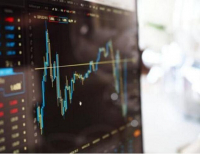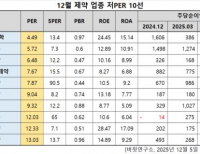미국 패스트푸드 회사 맥도날드의 대표적 햄버거 상품인 빅맥(Big Mac)의 판매 가격을 기준으로, 각국의 상대적 물가수준과 통화가치를 비교하는 지수를 말한다.
영국 경제 전문지 '이코노미스트'(The Economist)가 1986년부터 매년 상반기와 하반기에 발표하고 있다. '빅맥'은 전세계에 매장을 둔 세계적 패스트푸드 회사인 맥도날드(McDonald's Corporation)의 대표적 햄버거 상품의 명칭이다. 햄버거 가격으로 경제 상황을 설명한다고 하여 '햄버거 경제학'이라는 뜻의 버거노믹스(Burgernomics)'라고도 한다.
이 지수는 '환율은 각국 통화의 상대적 구매력을 반영한 수준으로 결정된다'는 구매력평가설(購買力平價說), '동일 제품의 가치는 세계 어디서나 같다'는 일물일가(一物一價)의 법칙에 기반하여 적정환율을 산출하는데, 이 환율을 빅맥환율이라고도 한다. 그 기준으로 전세계 어디서나 재료 구성이나 조리법, 크기가 표준화되어 있는 '빅맥' 햄버거 가격을 미국의 달러화로 환산하여 각국의 상대적 물가수준과 통화가치를 비교한다. 이 지수가 처음 발표된 이래로 시장환율과 적정환율 사이의 차이를 어느 정도 파악할 수 있다는 점에서 의미 있는 지표로 받아들여지고 있다. 일반적으로 이 지수가 낮을수록 해당 통화가 달러화보다 저평가된 것으로, 높을수록 고평가된 것으로 해석된다.
이 지수의 한계도 지적되고 있다. 이 지수의 기준이 되는 빅맥 가격은 빵·야채·고기 등의 원재료 가격에 따라서만 결정되지 않으며, 인건비나 건물 임대료 같은 비교역재(nontradable goods)도 반영되는 것이다. 상대적 물가수준이 높은 노르웨이·덴마크·스웨덴 등의 북유럽 국가들의 지수는 미국보다 항상 높게 나타난다. 또, 국가마다 식습관이 다양하고 세금 및 관세, 판매 경쟁의 정도 등도 서로 다르기 때문에 빅맥지수가 항상 현실을 반영하는 것은 아니라는 지적도 있다.
여기에 햄버거가 대표적 정크푸드로 인식되어 전세계적으로 소비량이 줄어드는 추세인 점도 이 지수의 효용성에 의문을 제기하게 만들었고, 이에 따라 그 대안으로 2004년에 스타벅스의 카페라테 가격을 기준으로 하는 스타벅스지수(Starbucks index), 2007년에는 애플사의 MP3 플레이어 아이팟 가격을 기준으로 하는 아이팟지수(iPod Index) 등의 변형이 나타나게 되었다.
영국 이코노미스트의 빅맥 지수 설명 원문은 다음과 같다. Source : http://www.economist.com/content/big-mac-index
THE Big Mac index was invented by The Economist in 1986 as a lighthearted guide to whether currencies are at their “correct” level. It is based on the theory of purchasing-power parity (PPP), the notion that in the long run exchange rates should move towards the rate that would equalise the prices of an identical basket of goods and services (in this case, a burger) in any two countries. For example, the average price of a Big Mac in America in January 2016 was $4.93; in China it was only $2.68 at market exchange rates. So the "raw" Big Mac index says that the yuan was undervalued by 46% at that time.
Burgernomics was never intended as a precise gauge of currency misalignment, merely a tool to make exchange-rate theory more digestible. Yet the Big Mac index has become a global standard, included in several economic textbooks and the subject of at least 20 academic studies. For those who take their fast food more seriously, we have also calculated a gourmet version of the index.
This adjusted index addresses the criticism that you would expect average burger prices to be cheaper in poor countries than in rich ones because labour costs are lower. PPP signals where exchange rates should be heading in the long run, as a country like China gets richer, but it says little about today's equilibrium rate. The relationship between prices and GDP per person may be a better guide to the current fair value of a currency. The adjusted index uses the “line of best fit” between Big Mac prices and GDP per person for 48 countries (plus the euro area). The difference between the price predicted by the red line for each country, given its income per person, and its actual price gives a supersized measure of currency under- and over-valuation.
※출처를 밝히면 자유롭게 인용 가능합니다.

